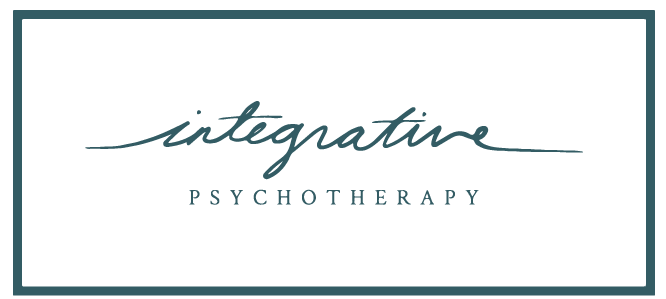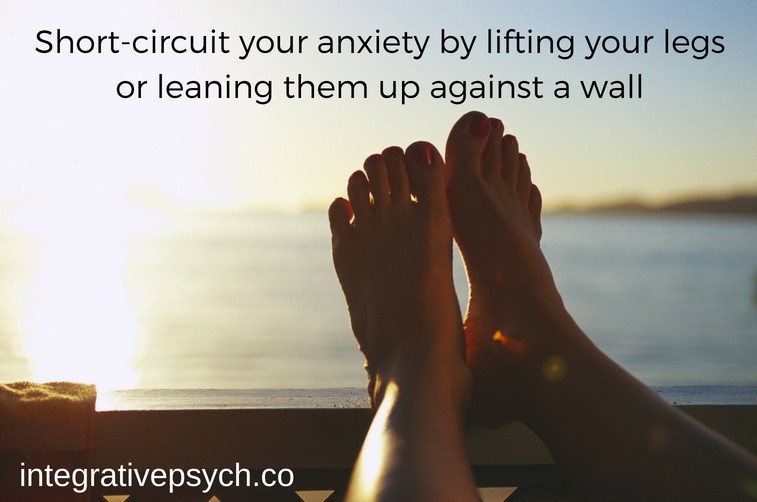6 Types of Anxiety Disorders
6 Types of Anxiety Disorders You May Struggle With.
Are you feeling anxious as you go about your regular Long Island activities, or as you drive around New York, going to and from work?
We all feel out of sorts sometimes, and that's just normal. Meeting a deadline at work, moving to a new town, being up all night with a colicky baby or mentally preparing for a family gathering are just a few situations that may leave you feeling just a bit jittery.
Anxiety is a normal part of life and is attached to a stimuli, event or trigger. However, if you have ongoing pressure, anxious thoughts, a sense of overwhelm and stress that lingers, you may have symptoms of an anxiety disorder.
What are the common anxiety disorders? Before I explain the different kind of anxiety disorders, I want you to know that anxiety is totally treatable. You can learn some skills to try at home and when needed, going for anxiety treatment, will offer symptom relief. Want to try some skills for relief right now? check this out for easy to use skills.
6 common anxiety disorders explained:
1. GENERALIZED ANXIETY DISORDER (GAD)
Individuals with GAD display excessive, persistent worry that interferes with daily functioning. The anxiety and tension is often accompanied by physical symptoms including feeling on "edge", easily fatigued, difficulty concentrating, feeling restless, difficulty sleeping and muscle tension. The worries usually revolve around daily things such as personal and family health, chores, appointments, responsibilities and daily activities.
2. PANIC DISORDER
Panic disorder's main symptom is recurrent panic attacks. Panic attacks consist of a combination of overwhelming physical and physiological distress. Common symptoms of panic attacks include:
Palpitations, pounding heart or rapid heart rate
Sweating
Shaking or trembling
Shortness of breath or choking sensations
Chest pain
Feeling dizzy, faint or light-headed
Tingling or numbness
Hot or cold flashes (chills)
Nausea or belly pains
Feelings disconnected, "far away" or cut off
Fear of losing control or dying
It is common for individuals who experience panic attacks to believe that they are having a heart attack or other life-threatening illness and may go to an emergency room. Because of this, panic attack sufferer begins to avoid situations or places where they experienced an attack previously. They may have an intense worry about when the next attack will happen. The average age for onset of panic disorder is 22-23 however there are individuals who have panic earlier or have later onset of symptoms. Panic attacks can occur as a singular diagnosis, but often exist in individuals who have depression or PTSD.
3. SOCIAL ANXIETY DISORDER
Individuals with social anxiety disorder (also called “social phobia”) have fear of social situations, feeling worried about possible judgement, rejection, embarrassment or about offending others. Some common symptoms:
Carrying a feeling of self-consciousness
Worrying about an upcoming social event days or weeks in advance
Have difficulty keeping old friends and making new ones.
Physical sensations include sweating, blushing, trembling or nauseous in social situations.
Extreme fear of meeting new people, public speaking, or eating/drinking in public.
The anxiety or fear causes problems with daily functioning that lasts at least six months.
4. OBSESSIVE-COMPULSIVE DISORDER
Individuals with OCD feel compelled to engage in repetitive, irrational and unwanted thoughts (obsessions) or behaviors.
For the individual suffering with OCD, the thoughts or actions seem impossible to control.
Although the compulsions are unhealthy for the long run, they offer momentary release of anxiety for those who have OCD.
5. PHOBIAS
A phobia is an irrational and disabling fear of something that poses no threat, and in most realistic cases, are harmless. Some people have phobias that play a very small role in their lives, while other phobias can severely interfere with one's ability to function in day-to-day living. When are phobias a problem? When they lead you to avoid people, places or situations out of fear of running into your specific phobia. Phobias can be related to anything, but some common phobias are:
Animal phobias: fear of dogs, snakes, mice, insects, birds.
Situational phobias: fear of specific situations such as riding in a car, riding on public transportation, flying in an airplane, going over bridges or under tunnels, being in a closed-in space such as an elevator or the like.
Some other common phobias include: Agoraphobia (fear of having a panic attack in public), Acrophobia (fear of heights) and Mysophobia (fear of germs).
6. SEPARATION ANXIETY DISORDER
Separation anxiety disorder is the experience of being excessively fearful or anxious about separation from those you are attached to. Why is it a "disorder"? Well, because the intensity of the feeling is beyond what is appropriate for the specific person’s age. When the feeling persists, overwhelms the mind and causes problems functioning, it is considered an anxiety disorder. A person with separation anxiety disorder may constantly worry about losing a loved one. They may experience nightmares about separation and may refuse to sleep away from home or from their loved ones. Now this may sound like a condition only children have, but many adults carry these symptoms with them from childhood, and there are some who develop these symptoms as adults. These kind of symptoms are often linked to PTSD and relationship traumas- and I'll be writing more on that next week.
A tip for here-and-now!
***
Next time your body starts sending tense signals your way, try this simple exercise called Legs Up the Wall. Find a solid spot on the ground to lay down onto. Bring your body close to a wall. Slowly bring your legs up and lean them against the wall. You want your legs to be higher up, almost above you and the rest of your body on the ground.
Doing this provides a boost to your blood circulation and sends more flow toward the upper body; essentially calming you physiologically and rebalancing your focus.
***
Discussing anxiety can bring added anxiety, and that can be irritating! So why bring it up? Well, undiagnosed, anxiety disorders can be severely impairing to daily functioning They can negatively affect your quality of life. They impact your personal relationships, your work focus, study mind, and your day-to-day activities such as socializing, going outdoors, baking, cooking or spending time with your little ones.
If something about this article resonates with you or if you've become aware that you may struggle with some anxiety symptoms, know that anxiety is completely treatable. No, your symptoms won't disappear overnight, but you can begin challenging the thoughts that feed the worry, acquire new skills and receive treatment that will offer relief starting today.
You can learn to live and love the way you're meant to. Working through anxiety opens the door to living fully. Do one small thing today to give yourself that gift. Read this for some easy self-help tips. If the self-help skills don't cut it, reaching out for therapy can help. Good psychotherapy for anxiety involves talk therapies, cognitive behavioral therapy, EMDR and expressive arts. These methods, amongst others, have been proven to help clients struggling with any kind of anxiety disorder.
You do not need to suffer alone.
If you live in Long Island or anywhere in New York, we offer counseling to help with your anxiety!
Get on your road to a better life. If you live in the five towns, nassau county or long island and are ready to do the work to get relief from your anxiety, feel free to reach out so we can help you start living a better life.



